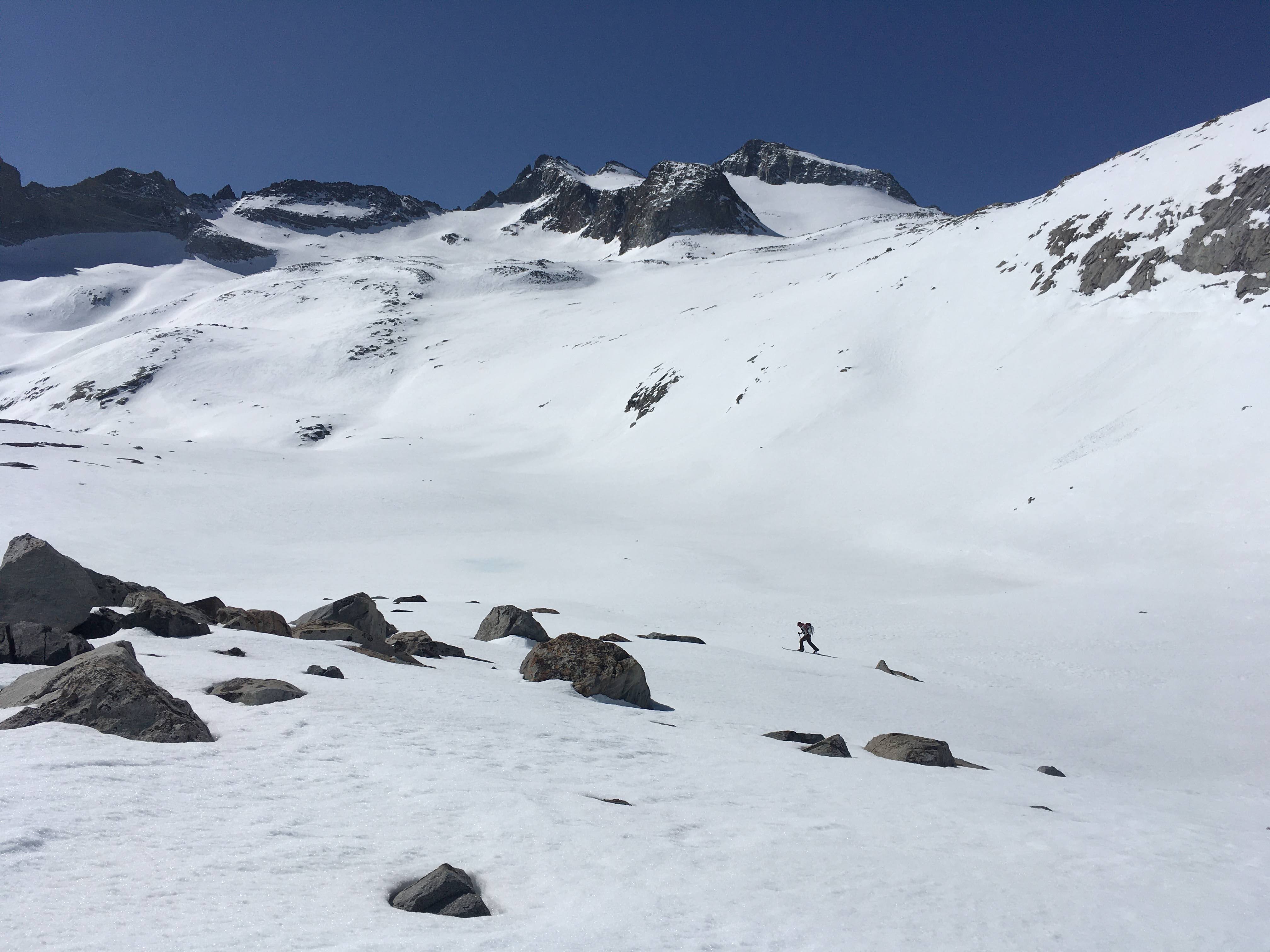
Ski Conditions and Weather
This is our final post of the 2021-2022 season. It has again been an honor and pleasure to serve in the capacity of the Tuolumne Meadows winter rangers. When we arrived in early December, we were soon buried by the 171 inches of new snow that fell over the next three weeks. Just when we thought we couldn’t shovel anymore, the faucet turned off. We certainly did not anticipate the remaining four consecutive months to be the driest on record. It has been an “upside-down” winter, where the snow and water content peaked in December and slowly diminished thereafter. From a winter recreation perspective, the heavy snows of December were timely (way better than March!) and for this we are grateful. After eleven winters here in Tuolumne we have come to expect the unexpected. Our first winter of 2011–2012 did not see any snowfall until late January, which at least made the ice-skating enthusiasts on Tenaya Lake happy.
The weather this week saw near record-high temperatures in the 60s for three days and ended with some snow and sub-zero temperatures. We took advantage of the heat wave and just enough snow coverage in order to ski up to near Donohue Pass. Despite the record dry past four months, the ski touring and corn cycle were excellent, though limited to appropriate aspect and elevation. As we traversed below what was once the Lyell Glacier it wasn’t difficult to envision the disappearing snow and ice across the globe. The glacier is now considered an stagnant ice patch because it is no longer moving downhill and is rapidly diminishing in size. Not only is there less annual global coverage of snow and ice but it has been melting earlier (Brown, 2000; Clow, 2010; Easterling et al., 2016; Kunkel et al., 2009-b; Liston and Hiemstra, 2011). This spring in Yosemite, the river flows are peaking in early April instead of late May or June. Just remember that if you live in the American West, your water probably came from the sky in the form of a beautiful, delicate snowflake. Each and every dendrite is as beautiful and as important as all life on this fragile little planet including you! So please, take care of one another and our only home, Mother Earth.
Avalanche and Snowpack Conditions
Please refer to the Eastern Sierra Avalanche Center (ESAC) for recent observations. Please make careful real time assessments when spring skiing. Pay close attention to overnight low temperatures and make sure you are off or out from under any terrain steep enough to slide when ski &/or boot penetration become high. Also be wary of rockfall especially when the sun first hits and later leaves the slopes.
Skis or snowshoes are still strongly recommended for visiting the Yosemite high country.
Wildlife
Snow is not only fun to slide on, but its unique properties are vital to life in the alpine zone. For example, the white-tailed ptarmigan that we have been seeing and hearing near Tuolumne Meadows and Donohue and Amelia Earhart passes the last few weeks depends on it for camouflage. If the snow melts before this bird molts into its browner summer plumage, it is more subject to predation.
Another alpine inhabitant, the American pika, has been active since early February gathering vegetation, which is typically done late summer. These stores provide calories and warmth. Although these little critters don’t hibernate, they rely on the snow like many other mammals to insulate them in their otherwise cold exposed talus rock piles. With a dwindling snowpack, even the bears are up and about early this year without a white blanket to cover their dens. Not only is snow insulating, its reflective properties keep the planet cooler which is also important to animals like the pika that can overheat in the summer. When you already live at the top of the mountain you can’t climb any higher to cool down.
In the Tuolumne Meadows vicinity, with the river melted out, a dozen mallards have moved back in. The red-winged blackbirds are mingling near Soda Springs. The violet-green swallows are darting thorough the air catching the newly hatched bugs.
Snow Travel Tip
This season we have talked about how you can protect yourself from the snow and elements of winter. Now it is your turn to POW (Protect Our Winters). Whether you want to simply do this for your selfish ski habit or more importantly for everyone around the globe, get and stay involved. Vote in ALL elections and follow these tips for day to day living: https://www.climate.gov/news-features/climate-qa/what-can-we-do-slow-or-stop-global-warming.
Questions
Please #RecreateResponsibly by planning and preparing thoroughly for your outdoor activities in the park.
Read through the following two pages before embarking on any day or overnight snow travel within this park:
- https://www.nps.gov/yose/planyourvisit/wildwinter.htm
- https://www.nps.gov/yose/planyourvisit/winter-safety.htm
You may contact us with any additional winter Tuolumne Meadows related questions.
See you next winter!
Laura and Rob Pilewski - Tuolumne Meadows winter rangers

